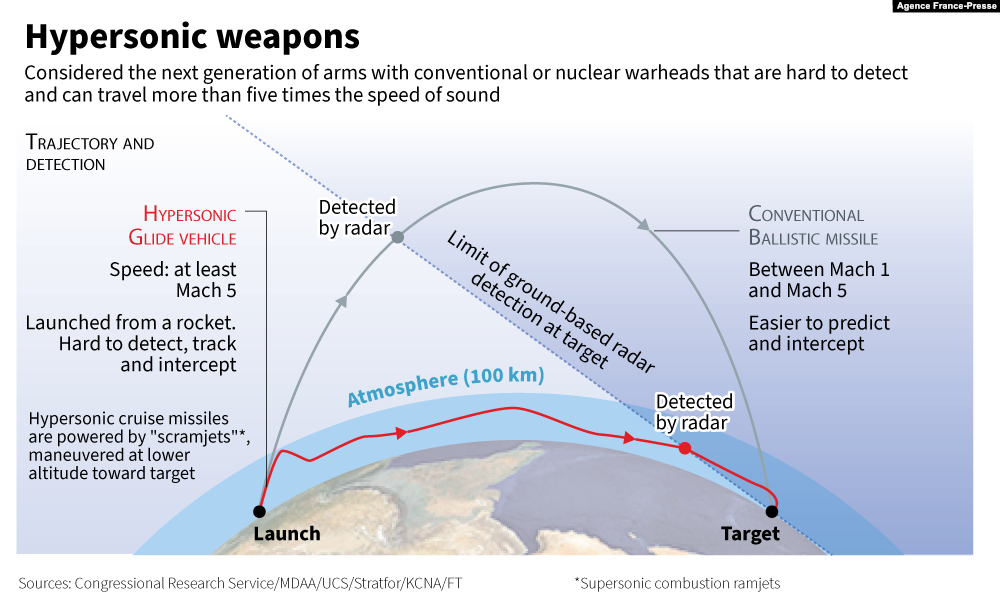This article was originally published by VOA.
WASHINGTON — Experts say North Korea’s hypersonic missile is hard to track and intercept because of its ability to maneuver, leaving South Korea vulnerable to North Korea’s missile attacks.
According to Jeffrey Lewis, a missile expert at the Middlebury Institute of International Studies at Monterey, the missiles’ capabilities may leave South Korea with little choice but to launch preemptive strikes on North Korea’s leadership before the regime orders the firing of missiles.
Despite the focus of attention on the missile’s speed, the real danger comes from the missile’s ability to maneuver, Lewis said.
He added that what North Korea tested earlier this month were maneuvering reentry vehicles (MaRV). A MaRV is a detachable gliding warhead that can change its course of flight.
“It’s just not right to say that this represents a shorter time of flight,” Lewis said. “What it represents is the ability to maneuver. So, the value of the maneuvering reentry vehicle is not that it would get to its target faster because it will get there slower.”

Hard to intercept
Lewis said the maneuverability of the missiles make them difficult to detect and intercept once they are in flight using missile defense systems.
He also said using preemptive strikes to destroy the missiles or launchers as they are being prepared to take off is equally difficult because locating where North Korea would fire them is hard to assess and target.
To read more, please click here.


